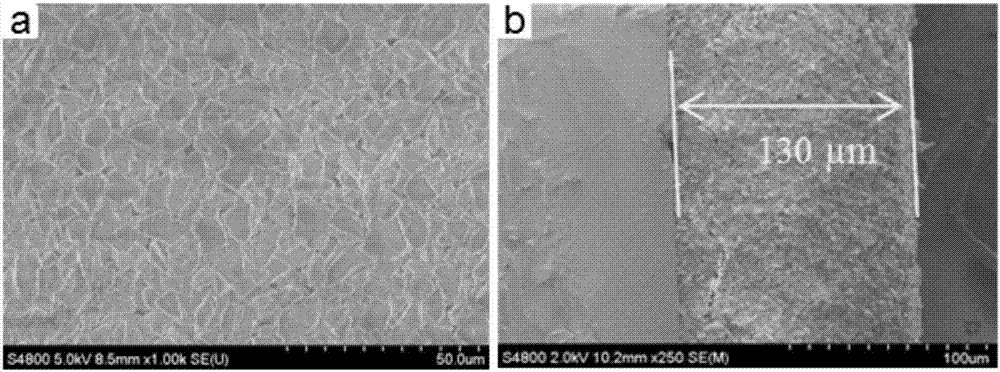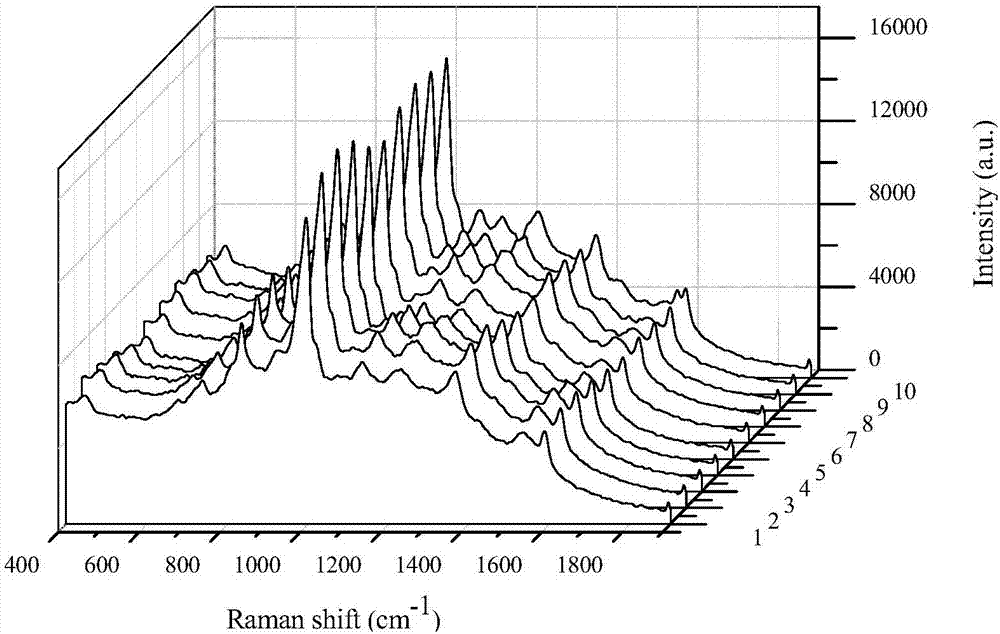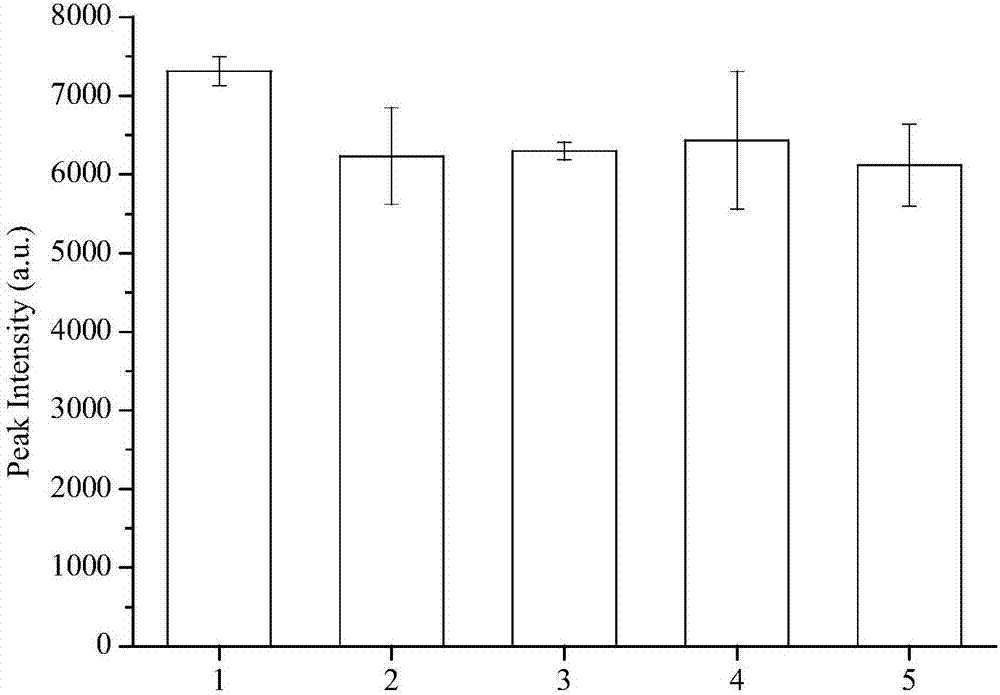Method for detecting benzoic acid in drink
A benzoic acid and beverage technology, applied in the field of food analysis, to achieve the effects of increased hydrophilicity, fast and efficient detection, and simple operation
- Summary
- Abstract
- Description
- Claims
- Application Information
AI Technical Summary
Problems solved by technology
Method used
Image
Examples
Embodiment
[0034] A method (TFME-SERS method) for detecting benzoic acid in beverages, comprising:
[0035] 1) Preparation of silica gel extraction substrate:
[0036] 1-1) Carry out hydroxylation treatment on the substrate of the glass sheet: ultrasonically clean the glass sheet with a size of 1.0cm×1.0cm in ultrapure water, ethanol, and acetone for 10 minutes respectively, and blow dry with nitrogen; add 35mL of Concentrated sulfuric acid, add 15mL of hydrogen peroxide to it while stirring, after the mixture is cooled, add the glass flakes that have been washed and blown dry with nitrogen into the mixture of concentrated sulfuric acid and hydrogen peroxide, heat in a water bath at 90°C for 1 hour, take out the glass flakes, and Rinse with pure water, blow dry with nitrogen;
[0037] 1-2) Add 0.12 g of sodium carboxymethyl cellulose to 30 mL of ultrapure water at 60°C, stir to dissolve, and obtain a sodium carboxymethyl cellulose solution with a concentration of 0.4%;
[0038] 1-3) Po...
experiment example 1
[0047] This experimental example characterizes the silica gel extraction substrate obtained in the example. figure 1 a is a scanning electron microscope image of the silica gel film extraction material in the silica gel layer on the silica gel extraction substrate. The figure shows that the microscopic surface of the silica gel material is in a rough and amorphous state with many holes, which makes the coating have more adsorption sites and Larger adsorption area. Such as figure 1 As shown in b, from the cross-sectional SEM image of the silica gel extraction substrate, it can be known that the thickness of the silica gel extraction coating is about 130 μm, and a thinner coating thickness is conducive to the rapid mass transfer process, and a larger extraction area ensures a larger The adsorption capacity helps to improve the sensitivity of the analytical method.
experiment example 2
[0049] In this experimental example, the reproducibility of the detection method in the embodiment was tested, and the reproducibility of the SERS signal at different sampling points on the same silica gel extraction substrate and the reproducibility of the same analyte signal from different silica gel extraction substrates were investigated. Firstly, the experiment used 500 μg / mL standard solution of benzoic acid as the extraction solution, and selected a single piece of silica gel extraction substrate for TFME process, and then randomly selected 10 area points within the range where the extraction piece was sprayed with gold colloidal nanoparticles to collect its SERS signal. The result is as figure 2 shown. It can be seen that the SERS signal of the analyte benzoic acid obtained in different regions of the silica gel extraction substrate is very obvious and has a high consistency.
[0050] Secondly, the experiment randomly selected 5 different silica gel extraction substr...
PUM
| Property | Measurement | Unit |
|---|---|---|
| length | aaaaa | aaaaa |
| width | aaaaa | aaaaa |
| thickness | aaaaa | aaaaa |
Abstract
Description
Claims
Application Information
 Login to View More
Login to View More - Generate Ideas
- Intellectual Property
- Life Sciences
- Materials
- Tech Scout
- Unparalleled Data Quality
- Higher Quality Content
- 60% Fewer Hallucinations
Browse by: Latest US Patents, China's latest patents, Technical Efficacy Thesaurus, Application Domain, Technology Topic, Popular Technical Reports.
© 2025 PatSnap. All rights reserved.Legal|Privacy policy|Modern Slavery Act Transparency Statement|Sitemap|About US| Contact US: help@patsnap.com



